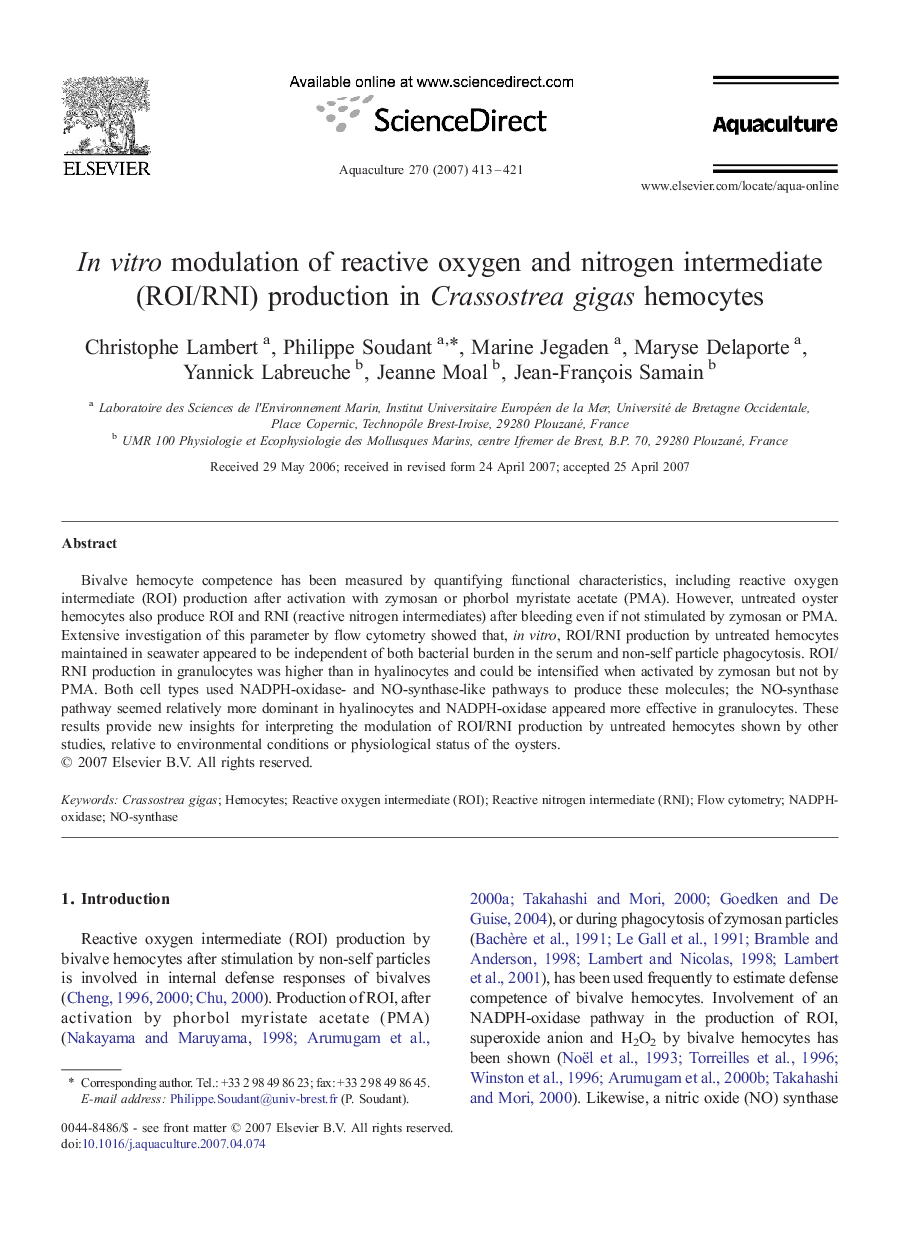| Article ID | Journal | Published Year | Pages | File Type |
|---|---|---|---|---|
| 2425064 | Aquaculture | 2007 | 9 Pages |
Bivalve hemocyte competence has been measured by quantifying functional characteristics, including reactive oxygen intermediate (ROI) production after activation with zymosan or phorbol myristate acetate (PMA). However, untreated oyster hemocytes also produce ROI and RNI (reactive nitrogen intermediates) after bleeding even if not stimulated by zymosan or PMA. Extensive investigation of this parameter by flow cytometry showed that, in vitro, ROI/RNI production by untreated hemocytes maintained in seawater appeared to be independent of both bacterial burden in the serum and non-self particle phagocytosis. ROI/RNI production in granulocytes was higher than in hyalinocytes and could be intensified when activated by zymosan but not by PMA. Both cell types used NADPH-oxidase- and NO-synthase-like pathways to produce these molecules; the NO-synthase pathway seemed relatively more dominant in hyalinocytes and NADPH-oxidase appeared more effective in granulocytes. These results provide new insights for interpreting the modulation of ROI/RNI production by untreated hemocytes shown by other studies, relative to environmental conditions or physiological status of the oysters.
